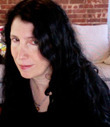Caroline Leavitt's Blog, page 8
April 12, 2020
What is a better, more eerie title than THE FACELESS OLD WOMAN WHO SECRETLY LIVES IN YOUR HOME? Here in the Nothing is Cancelled Book Tour, Jeffrey Cranor talks about the book--and so much more-- in a fabulous video!
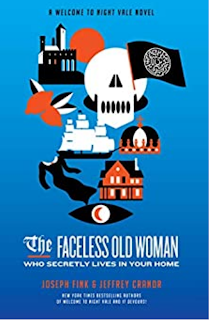
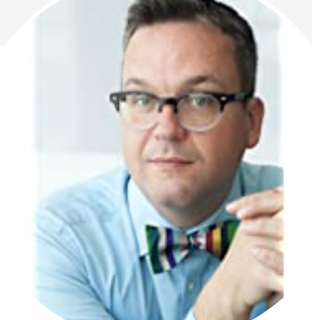
From the New York Times bestselling authors of Welcome to Night Vale and It Devours! and the creators of the hit podcast, comes a new novel set in the world of Night Vale and beyond.
What is more terrifying than a faceless old woman in your home, but no one knows where she came from or how she got there? Cranor unfolds the story in fascinating and unsettling flashbacks, traveling through the centuries to reveal her past, and her future plans to sabotage a local man named Craig. Jeffrey Cranor cowrites the Welcome to Night Vale podcast. He also cocreates theater and dance pieces with choreographer/wife Jillian Sweeney. They live in New York. And he's made an amazing video for the Nothing is Cancelled Book tour! Thank you Jeffrey!
Published on April 12, 2020 09:44
April 10, 2020
Love. Madness. Coming of age as best she could. An enthralling tragic-comic memoir DON'T GO CRAZY WITHOUT ME from Deborah A. Lott
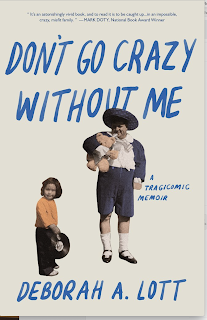 The phenomenal book
The phenomenal book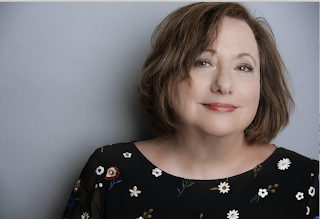 The phenomenal author
The phenomenal author The phenomenal video
Don't you love memoirs? I know I do. There is something so intimate, as if someone is sitting across from you at a table, holding your hand, drawing you close, and telling you shattering secrets.
I absolutely loved Deborah A. Lott's Don't Go Crazy Without Me, the tragicomic coming of age story of a girl who grew up under the seductive sway of her outrageously eccentric father. He taught her how to have fun; he also taught her to fear food poisoning, other children's infectious diseases, and the contaminating propensities of the world at large. Alienated from her emotionally distant mother, the girl bonded closely with her father and his worldview. When he plunged from neurotic to full-blown psychotic, she nearly followed him. Sanity is not always a choice, but for the sixteen-year-old, decisions had to be made and lines drawn between reality and what her mother called her "overactive imagination." She would have to give up beliefs carried by the infectious agent of her father's love.
You know you want to read it right now!
Deborah A. Lott’s memoirs, essays, and reportage have been published in the Rumpus, Salon, the Alaska Quarterly Review, Bellingham Review, Black Warrior Review, Cimarron Review, the Los Angeles Times, StoryQuarterly, the Good Men Project, the nervous breakdown, and many other places. Her family’s legacy of hypochondria was featured on NPR’s This American Life. Her first book, In Session: the Bond between Women and their Therapists, offered an unprecedented look at psychotherapy from the perspective of clients interviewed by the author. Her essays have been thrice named as “notables of the year” by Best American Essays. She teaches creative writing and literature at Antioch University, Los Angeles, where she serves as faculty advisor to Two Hawks Quarterly.com. She lives with her husband, Gary Edelstone, in Los Angeles. <!-- /* Font Definitions */ @font-face {font-family:"Cambria Math"; panose-1:2 4 5 3 5 4 6 3 2 4; mso-font-charset:0; mso-generic-font-family:roman; mso-font-pitch:variable; mso-font-signature:-536870145 1107305727 0 0 415 0;} @font-face {font-family:Calibri; panose-1:2 15 5 2 2 2 4 3 2 4; mso-font-alt:Calibri; mso-font-charset:0; mso-generic-font-family:swiss; mso-font-pitch:variable; mso-font-signature:-536859905 -1073732485 9 0 511 0;} /* Style Definitions */ p.MsoNormal, li.MsoNormal, div.MsoNormal {mso-style-unhide:no; mso-style-qformat:yes; mso-style-parent:""; margin:0in; margin-bottom:.0001pt; mso-pagination:widow-orphan; font-size:12.0pt; font-family:"Times New Roman",serif; mso-fareast-font-family:Calibri; mso-fareast-theme-font:minor-latin;} .MsoChpDefault {mso-style-type:export-only; mso-default-props:yes; mso-fareast-font-family:Calibri; mso-fareast-theme-font:minor-latin;}size:8.5in 11.0in; margin:1.0in 1.0in 1.0in 1.25in; mso-header-margin:.5in; mso-footer-margin:.5in; mso-paper-source:0;} div.WordSection1 {page:WordSection1;}</style> </div><div class="separator" style="clear: both; text-align: center;"><br /></div><br /><div class="MsoNormal"><br /></div><style><!-- /* Font Definitions */ @font-face {font-family:"Cambria Math"; panose-1:2 4 5 3 5 4 6 3 2 4; mso-font-charset:0; mso-generic-font-family:roman; mso-font-pitch:variable; mso-font-signature:-536870145 1107305727 0 0 415 0;} @font-face {font-family:Calibri; panose-1:2 15 5 2 2 2 4 3 2 4; mso-font-alt:Calibri; mso-font-charset:0; mso-generic-font-family:swiss; mso-font-pitch:variable; mso-font-signature:-536859905 -1073732485 9 0 511 0;} /* Style Definitions */ p.MsoNormal, li.MsoNormal, div.MsoNormal {mso-style-unhide:no; mso-style-qformat:yes; mso-style-parent:""; margin:0in; margin-bottom:.0001pt; mso-pagination:widow-orphan; font-size:12.0pt; font-family:"Times New Roman",serif; mso-fareast-font-family:Calibri;} .MsoChpDefault {mso-style-type:export-only; mso-default-props:yes; font-size:10.0pt; mso-ansi-font-size:10.0pt; mso-bidi-font-size:10.0pt; mso-fareast-font-family:Calibri;}size:8.5in 11.0in; margin:1.0in 1.0in 1.0in 1.0in; mso-header-margin:.5in; mso-footer-margin:.5in; mso-paper-source:0;} div.WordSection1 {page:WordSection1;}</style>
Published on April 10, 2020 11:15
April 7, 2020
Sometimes, reading about plague is the antitdote to living through one: John Kelly talks about his absolutely brilliant THE GREAT MORTALITY, An Intimate History of the Black Death, the Most Devastating Plague of all time
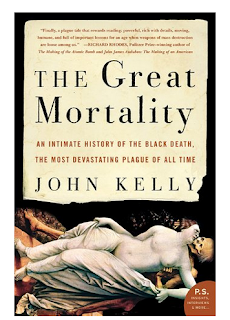
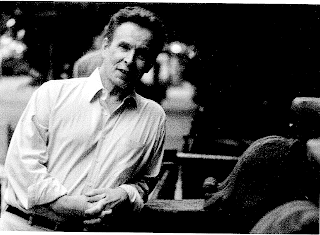
John Kelly is a genius writer, and this particular book could not be more timely. THE GREAT MORTALITY, about the Black Death, has been enormously praised. Richard Preston, author of THE HOT ZONE (about Ebola) wrote: "I couldn't stop reading THE GREAT MORTALITY, It is a book of brilliance and wisdom." Richard Rhodes, author of THE MAKING OF THE ATOMIC BOMB, called it "powerful, humane, rich with details, moving, and full of important lessons." Jonathan Yardley of the WASHINGTON POST and Michiko Kakutani of the NEW YORK TIMES gave it very positive and major reviews right after it was published. I am so honored to host John here.
Thank you so much, John!
Q: What lessons can we learn today from your much-touted 2005 book?
A: First of all, Caroline, thank you for complimenting the book. Secondly, as that wit Voltaire once said, "History always changes, but people never do.” First I will write about the medical / scientific / geographic similarities, then about the human ones. The plague that I wrote about -- La Moria Grandissima: The Black Death -- was a pandemic that killed a third of Europe's then-75 million people during the years 1347-49. This high figure is, thankfully, not going to be reached by our current pandemic, coronavirus, because enough countries, so far, have been practicing vigilant shelter-in-place in a world with the instant media that the 14th century would not have even guessed was imaginable. (Despite the egregious and cruel irresponsibility of our coward in the White House, most of our governors and heroic health care workers and other local leaders and citizens are taking it upon themselves to do this necessary work themselves.) But the fact that half of the world is in lockdown – half of the world! – shows us that the enormous reach of this pandemic is close to the more fatal reach of the 14th century one. The Black Death was borne by a bacteria on a rodent, just as this pandemic – coronavirus -- was borne by a virus from a bat. The Black Death also travelled from nation to nation from north-central Asia to China to the west, when trade opened up. Today, in our instant-global-travel world, the spread has been much more rapid – what took years in the 14th century has taken short months today. The appalling – grotesque, by our standards -- lack of hygiene in European cities spread the Black Death like wildfire. People bathed monthly at best. About six streets in Paris were named for merde, which was often tossed out windows in buckets. Here was daytime London in 1348: “Imagine a shopping mall where everyone shouts, no one washes, front teeth are uncommon, and the shopping music is provided by the slaughterhouse up the road.” Today’s pandemic was made for our more sterile times; coronavirus doesn’t need filth because the 21st century world is that much different than the 14th. It is highly contagious in even the cleanest and most elite circles (Tom Hanks and Rita Wilson and Prince Philip and Boris Johnson all got it). But, in both the long-ago and today, mere talking proved dangerous. In 1348, delirious seamen reached ports in Italy so infested that, merely by having a brief conversation with one of them, an uninfected person could catch it. Today, our heroic epidemiologist and virology authorities on TV are telling us that talking to someone closer than six feet apart could be dangerous. In 1348 and 49, the plague-dead were dumped into plague pits; today, in New York City, refrigerated trucks are temporary morgues and rumors were spreading that empty city parks will be used for burial. (Fortunately, these were shot down by Mayor deBlasio, though he recently mentioned an out of the way city field for temporary burials.) In 1348, a worker in Italy, watching the devastation, said: “This is the end of the world.” Many are feeling – fearful of that – now.
Now to the way that human nature has stayed the same: First, sexism. In the 14th century, a brilliant female doctor in France was denied licensure because of her gender. Here, today, we see a different kind of sexism going on: Ambassador Deborah Birx, the enormously accomplished physician-Naval officer and former head of the Obama Ebola response, is now made to compliment and defer to Trump at press conferences, despite her beyond-overwhelmingly superior authority, humanity, and ethics. Despite the copious female scientific authorities (interviewed on CNN and MSNBC), Birx is always the only female at Trump’s outrageously self-lionizing, lie-filled forced incursions on the truth-needing public’s lives. Second, the need for escapism. In the 14th century, plague-terrorized people put aside their trauma for an hour or so to watch glamorous scandal, as when a beautiful 23 year old Italian queen was brought up on (and acquitted of) murdering her royal husband. Today we get pandemic relief from The Tiger King, the Kardashians, the Royals, and more. Thirdly: Pandemics bring out the worst bigotry in people. The Black Death led to horrible anti-Semitism – cities actually burned their Jewish populations. Today, thanks to Trump’s calling coronavirus “the Chinese virus,” harassment and threats against Asian Americans have sprung up. His calling out of female journalists of color as “nasty” and “threatening” makes things worse. Finally – and despite all these awful things -- the darkest and deadliest pandemics prove that there are good people. In the 14th century, monks washed the feet of sufferers and surgeons served the sick even when they were sick themselves. A stout and resolute Italian bookkeeper named Agnolo di Tura buried his wife and all his children, dutifully doing what had to be done, despite the pain. Today, the heroes that are our health care providers, other first and second and third responders, restaurant and pharmacy and supermarket and other staff that keep up essential services going while risking so much: They are our heroes! And it is inspiring for us to know that heroes exist.
Q: What else can we do to learn from the past, at this frightening moment?A: There are a number of other books that are excellent: John Barry’s The Great Influenza. Richard Preston’s The Hot Zone. Laurie Garrett’s Ebola: Story of an Outbreak. Randy Shilts’s And The Band Played On. We can learn from the past, even though, in this horrendous case, the leaders of our government should have learned from the plentiful warnings of the recent few years, and those that were delivered even before that. To all of us: Let’s work together and stay safe. Thanks for giving me all this space, Caroline. +++<!-- /* Font Definitions */ @font-face {font-family:"Cambria Math"; panose-1:2 4 5 3 5 4 6 3 2 4; mso-font-charset:0; mso-generic-font-family:roman; mso-font-pitch:variable; mso-font-signature:-536870145 1107305727 0 0 415 0;} @font-face {font-family:Calibri; panose-1:2 15 5 2 2 2 4 3 2 4; mso-font-charset:0; mso-generic-font-family:swiss; mso-font-pitch:variable; mso-font-signature:-520092929 1073786111 9 0 415 0;} /* Style Definitions */ p.MsoNormal, li.MsoNormal, div.MsoNormal {mso-style-unhide:no; mso-style-qformat:yes; mso-style-parent:""; margin:0in; margin-bottom:.0001pt; mso-pagination:widow-orphan; font-size:12.0pt; font-family:"Times New Roman",serif; mso-fareast-font-family:Calibri; mso-fareast-theme-font:minor-latin;} .MsoChpDefault {mso-style-type:export-only; mso-default-props:yes; mso-fareast-font-family:Calibri; mso-fareast-theme-font:minor-latin;}size:8.5in 11.0in; margin:1.0in 1.0in 1.0in 1.25in; mso-header-margin:.5in; mso-footer-margin:.5in; mso-paper-source:0;} div.WordSection1 {page:WordSection1;}</style>
Published on April 07, 2020 14:11
April 6, 2020
Why do powerful women not want to own their power? The inimitable Katie Roiphe talks about THE POWER NOTEBOOKS, the anxiety of being vulnerable, the gap between private and public lives, and so much more.
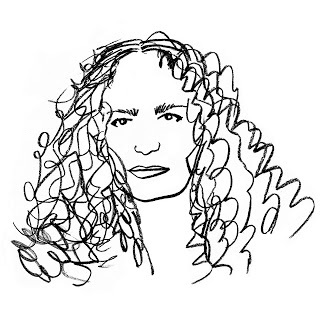 Drawing of Katie Rophie by Katy Hunchar
Drawing of Katie Rophie by Katy Hunchar 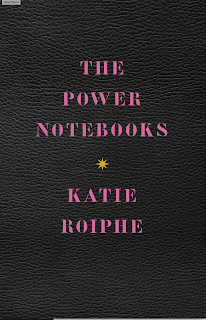
Katie Roiphe is an author and journalist writing about feminist issues. She is most known for writing The Morning After: Sex, Fear, and Feminism, and In Praise of Messy Lives, as well as The Power Notebooks, and has contributed articles to prominent publications like The New York Times, The Washington Post, Harper’s Magazine, Esquire, The Paris Review, Vogue, and Slate. She has a PhD in literature from Princeton University and is the director of the Cultural Reporting and Criticism program at New York University’s Arthur L. Carter Journalism Institute.
Thank you for being here, Katie!
I love the structure, the notebook entries. (note: the answer to this question is in your book, but it’s fascinating, so I’d love to have you talk about it.) What made you decide on this?
I actually felt that my usual ways of writing would fail me. I didn’t want to write arguments or elegant essays. I wanted to examine my uncertainties, doubts, bewildering moments, intimate confusions, and for this the form of a notebook, with its jottings and stories made the most sense. I wanted something raw, unfinished, note-like. I have been keeping notebooks since I was twelve, and as a scholar have pored over notebooks and journals in archives since graduate school, so the form has long intrigued me.
What I also deeply admire is how vulnerable you’ve let yourself be in the writing. How incredibly brave to open your life up to readers like that. Many of us, especially those women with power, have been taught not to do that, to always act “as if” we are in complete control. You didn’t. What was that like, giving up that power? How did you feel about it as you were writing and how do you feel about it now? Is anything you are going to write in the future going to be different because of that?
The answer is that I felt very anxious! I had to wake up at four thirty or five in the morning to write this book so I could pretend the outside world didn’t exist and feel a kind of pure solitude. I thought of giving it up several times. And now that it is out I feel a little like my publisher broke into my house in the middle of the night and stole my real notebooks (which is not exactly what happened!). Anyway, it was the hardest thing I have written, hands down, and yet I felt inspired inspired. Partly by the photograph of Simone de Beauvoir I reproduce at the beginning of the book, naked, in heels, seen from the back in her forties. She left the door open with a photographer in the room. I somehow find the contradictions of that photo lodged in my head. She wrote, “I have shown women as they are, as divided human beings, not as they ought to be .” And that gave me courage. This book is about tolerating contradictions, learning to live with them, and I got more comfortable with that by the end.
It’s fascinating that you found contradictions about power and women—and how we all experience it, and why you kept revisiting it, even back to teenaged years, why we fail to hang onto it. We like the idea of power, but not powerful women. How do you think we can start to change that?
I don’t know about how to change it. For me, analyzing and observing and catching our ambivalence about power (and powerful women) on the page was the most I could aim for.
I’m struck by this question: Why must we have private and public selves? Why can’t we be one integrated person? There might be a cost for that now, but if we continue to become a new normal, won’t that cost vanish?
One of the reasons I delved into the lives of women writers I admire in this book—Sylvia Plath, Edith Wharton, Mary McCarthy, Jean Rhys—is that it helped me see the gap between public and private self in other people. So it’s not just that I was failing to be consistent—powerful in public, weaker in private—but lots of the writers I admire most did too. The spirit I wrote in was not to judge anyone, or say what is healthy or not healthy, but to see and uncover and learn to accept the contradictions as part of life. I think the “divided human beings” Simone de B. wrote about are inevitable (and as I have heard from many male readers, they feel divided too.)
What’s obsessing you now and why?
Well besides coronavirus? Garth Greenwell’s gorgeous novels, Cleanness and What Belongs to You and Hilary Mantel’s trilogy. Both are fantastic insomnia companions.
What question didn’t I ask that I should have?
I guess you could have asked if I was writing anything new and alas the answer would be no I am too busy checking the news 1,000 times a day and being generally anxious. But one of these days I hope to start something. I always think of John Updike saying that the consolation of being a writer is that you can “turn pain into honey.” That would be nice right about now for those of us who are achieving it.<!-- /* Font Definitions */ @font-face {font-family:"Cambria Math"; panose-1:2 4 5 3 5 4 6 3 2 4; mso-font-charset:0; mso-generic-font-family:roman; mso-font-pitch:variable; mso-font-signature:-536870145 1107305727 0 0 415 0;} @font-face {font-family:Calibri; panose-1:2 15 5 2 2 2 4 3 2 4; mso-font-charset:0; mso-generic-font-family:swiss; mso-font-pitch:variable; mso-font-signature:-520092929 1073786111 9 0 415 0;} /* Style Definitions */ p.MsoNormal, li.MsoNormal, div.MsoNormal {mso-style-unhide:no; mso-style-qformat:yes; mso-style-parent:""; margin:0in; margin-bottom:.0001pt; mso-pagination:widow-orphan; font-size:12.0pt; font-family:"Times New Roman",serif; mso-fareast-font-family:Calibri;} .MsoChpDefault {mso-style-type:export-only; mso-default-props:yes; font-size:10.0pt; mso-ansi-font-size:10.0pt; mso-bidi-font-size:10.0pt; mso-fareast-font-family:Calibri;}size:8.5in 11.0in; margin:1.0in 1.0in 1.0in 1.25in; mso-header-margin:.5in; mso-footer-margin:.5in; mso-paper-source:0;} div.WordSection1 {page:WordSection1;}</style><br /><br /><style><!-- /* Font Definitions */ @font-face {font-family:"Cambria Math"; panose-1:2 4 5 3 5 4 6 3 2 4; mso-font-charset:0; mso-generic-font-family:roman; mso-font-pitch:variable; mso-font-signature:-536870145 1107305727 0 0 415 0;} @font-face {font-family:Calibri; panose-1:2 15 5 2 2 2 4 3 2 4; mso-font-charset:0; mso-generic-font-family:swiss; mso-font-pitch:variable; mso-font-signature:-520092929 1073786111 9 0 415 0;} /* Style Definitions */ p.MsoNormal, li.MsoNormal, div.MsoNormal {mso-style-unhide:no; mso-style-qformat:yes; mso-style-parent:""; margin:0in; margin-bottom:.0001pt; mso-pagination:widow-orphan; font-size:12.0pt; font-family:"Times New Roman",serif; mso-fareast-font-family:Calibri;} .MsoChpDefault {mso-style-type:export-only; mso-default-props:yes; font-size:10.0pt; mso-ansi-font-size:10.0pt; mso-bidi-font-size:10.0pt; mso-fareast-font-family:Calibri;}size:8.5in 11.0in; margin:1.0in 1.0in 1.0in 1.0in; mso-header-margin:.5in; mso-footer-margin:.5in; mso-paper-source:0;} div.WordSection1 {page:WordSection1;}</style>
Published on April 06, 2020 15:28
April 5, 2020
How do you get an agent? How do you sustain a career? How do you deal with rejection? Kevin Larimer and Mary Gannon talk about THE POETS & WRITERS COMPLETE GUIDE TO BEING A WRITER--and it's phenomenal.
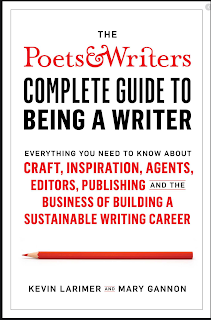 THE Bible for Writers
THE Bible for Writers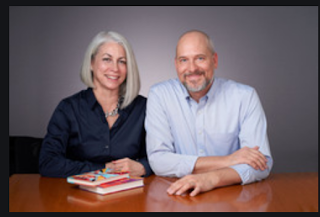 Kevin Larimer and Mary Gannon
Kevin Larimer and Mary Gannon There's a whole lot of books out there about making a career out of writing, but somehow, at least for me, they leave things out--the things you really want to know. Like how to go on book tour. How to make a pre-publication checklist. The things writers don't talk about that we all want to know--and they come straight from many famous writers' mouths, too. Who else but Poets & Writers editors Kevin Larimer and Mary Gannon would provide such an absolute BIBLE to all things writerly?
I cannot thank both of you enough!
This book is absolutely incredible in scope. How did you go about deciding what would go in, and even more important, where it would go?
Thanks so much, Caroline! In many ways we have been working on this book for nearly twenty-five years, beginning all the way back when we started working at Poets & Writers. (Mary started at P&W in 1996, leaving in 2013, when she was editorial director; Kevin started in 1999, and continues on as editor in chief.) In those years we wrote, read, and edited a great many articles, essays, and interviews by some of the greatest minds in the literary, publishing, and bookselling communities all across the country and around the world. Even before we started working on the book in earnest, our editor, Jofie Ferrari-Adler at Avid Reader Press, was very clear about wanting this book to be, as the title suggests, a complete guide—meaning that no topic was too small, or too large, to be addressed. There was a great freedom in that permission to widen the lens as much as possible. Of course it was also a little intimidating: How to encompass something as big as the life of the writer and do it justice in one book?
Very early on, we hit upon one thing we wanted to keep in the forefront of our minds while writing: We wanted this book to be human, to have a pulse, a heart. While the business of building a sustainable writing career requires hard work, dedication, and careful thinking, writers also have emotions and insecurities and other responsibilities—to others and to themselves. Too often authors of resource books can lose sight of the fact that real human beings are the ones who will be trying to execute the advice and guidance in those pages. So we wanted to always keep that in mind. It became our lodestar. And, of course, it matched perfectly the tone and guiding principles of coverage in Poets & Writers Magazine. As far as organizing the material, we wanted to offer one version of chronological order, from inspiration to craft to education to first steps in publishing to book deals to publicity and promotion, so that readers could follow a trajectory, from inspiration to publication and beyond. We also included a section of shorter chapters that look at the world of writing through the lens of some big-picture, real-life subjects such as time, happiness, money, respect, family, and so on. That section is positioned right in the middle, which just made sense to us. Again: writers are real people with real lives, and this section anchored that theme right in the middle.
What’s so fantastic about the book is the mix. Not only is there a wealth of practical advice, but I really appreciated the personal advice from writers, too and on subject after subject. Coming from Poets & Writers, you must have had an avalanche of material to choose from. How on earth did you sift through it? What was that process like?
Well, we were pretty familiar with the subjects we were covering, having had roles in helping to generate so much of it over the years. From the beginning, we decided we wanted this to be original material—not a best-of anthology of previously published articles—though we did take a few sidebars and lists that had appeared in print and updated them for the book. So we avoided getting too hung up in poring over twenty or thirty years of magazine issues and instead started from scratch, turning back to magazine pieces to glean advice only when it naturally occurred to us to do so. Since we have dedicated our working lives to providing advice and resources to writers, we internalized a lot, and working on the book was a wonderful way of laying it all out there again. As far as sifting through material though, there was one chapter that involved a pretty crazy process. For chapter 4, “One Hundred Notes on Craft,” we spent weeks revisiting craft books, reading many new ones, and recalling marginalia from our writing notebooks and other craft essays to compile a huge collection of wisdom from writers about their art. That was a lot of fun, but then we had to organize it into a chapter that not only made sense but would be something that writers would actually want to read. So we typed up all those quotes about craft, cut them up into separate little ribbons of paper, and spent an intense day and night arranging and rearranging them on our dining room table. Once we got them into an order that felt right, we set to work writing connective tissue for each one—linking one to another using historical or cultural context that ended up revealing so many interesting similarities and commonalities, as well as points of departure, among a hundred writers who wrote about their craft over the past 150 years.
I also love that the book is a kind of inspiring journey, with a deeply professional perspective. But what other book also looks at the very personal business of writing, including how to manage time and grapple with happiness and family, which are all deeply important to any writer who needs to succeed. “A successful writer is an informed writer.” Can you talk about that please?
As we mentioned earlier, striking that balance of professional and personal was deeply important to us, so hitting on the idea of a section wherein we could look at some of these somewhat existential topics, such as Writing and Happiness and Writing and Time, felt very freeing, and opened up our thinking about the life of the writer in important ways.
As for that phrase we return to again and again—“A successful writer is an informed writer”—that is something that has always guided us through decisions about coverage in the magazine. This belief that there is no one way to go about being a writer. So much depends on your expectations, what you hope to gain, and how you define success for yourself. Once you figure that out, it’s a matter of figuring out how things can be done, how things typically work, and then making decisions about whether you want to follow those well-worn paths or cut your own. There is no wrong way to write, to create, to publish. But there are systems in place—writing programs, writing contests, literary magazines, book publishers, literary agents, and so on—that writers don’t necessarily need to be a part of, but we think it’s important to know how they work so you can make those decisions for yourself.
The great thing about this book is that there are actions to take, especially since, too often, writers are paralyzed and don’t know what to do. For example in 100 Notes on Craft, a writer could take any one of the suggestions and put it to use! Twenty-one questions to ask if you want to pursue an MFA was brilliant. There were so many positive things to do, including writing a letter or tweet to an author you admire, which builds community. Which brings me to the word “sustainable” in your subhead. A sustainable writing career is what everyone wants and what many writers fear they cannot have. What’s the most important thing you would say to them?
We sprinkled fifty Action Items throughout the book for this very reason—to give writers some suggestions for things they can do, some big and some small, that will keep them moving forward as writers. While it’s true that the financial reality for the majority of writers can be challenging—this isn’t an easy way to make a living—there are ways to lead a creative life while building a sustainable career as a writer who works in academia, or in the publishing industry, or in the nonprofit sector, or stitches together freelance or technical writing gigs, or something else entirely. We don’t just mean “sustainable” in financial terms; we’re also interested in how to incorporate the writing life into all the other aspects of life, including one’s emotional life, family, and relationships. Again, establishing and managing one’s expectations is fundamental; the most important thing is to keep writing.
I want to thank you for having a chapter on surviving success and failure. (You ask the question: Did selling lots of paintings make Mark Rothko happy?” And by asking that, it diverts that whole notion of success to the work, to doing what feeds you without always hanging it on whether or not you made the NYT Bestseller list. I think that’s important because careers are not a straight line up or down—there are many valleys, I think. What do you think is the most important way that writers can measure success?
Much as we’d like to, we can’t take credit for that Rothko line: That was Anthony Doerr, who Kevin had the great fortune of getting to know during a week at the Kachemak Bay Writers Conference in Homer, Alaska, a couple years ago. But this notion of success is a fascinating one, as it’s different for every writer, and as we learned from writers like Jonathan Lethem, it’s a moving target. As he mentions in the chapter “Surviving Success and Failure,” he no longer has to worry about whether his work will be published, but that doesn’t mean he lives in a constant state of Success. When you think about it, failure is forever—it’s always there in front of you, but there is a way to learn from it, and that is yet another way of measuring success: how you respond to failure. In the end, if you believe in what you’re writing, and it continues to challenge you in creative, productive ways, that seems to us a good way to measure success.
How do you see the writing community changing in the next decade? And how can writers prepare for it.
We are seeing a slight ebb in the numbers of MFA programs, so that’s an interesting development that we’ll be keeping an eye on, and I think related to that is the expansion of online spaces that inspire and bring together writers. And of course that is taking on an entirely unexpected and important dimension during these strange times.
What’s obsessing you now and why?
It is what’s on the minds of the majority of the earth’s human population: coronavirus. Our lives, all of our lives, have changed in ways that we have no way of comprehending just yet. The only certainty is that the world’s writers will absorb, digest, reflect, and make sense of whatever new reality awaits us, and that fact gives us no small amount of hope. In the meantime, we are turning to literature to provide nourishment for the heart and the mind.
What question didn’t I ask that I should have?
You should have asked what we think about your efforts during this pandemic, such as A Mighty Blaze, to give a much-needed signal boost to authors whose book launches and promotional efforts have been overshadowed by the crisis. And we would have answered: You are an angel. Thank you!<!-- /* Font Definitions */ @font-face {font-family:"Cambria Math"; panose-1:2 4 5 3 5 4 6 3 2 4; mso-font-charset:0; mso-generic-font-family:roman; mso-font-pitch:variable; mso-font-signature:-536870145 1107305727 0 0 415 0;} @font-face {font-family:Calibri; panose-1:2 15 5 2 2 2 4 3 2 4; mso-font-charset:0; mso-generic-font-family:swiss; mso-font-pitch:variable; mso-font-signature:-520092929 1073786111 9 0 415 0;} /* Style Definitions */ p.MsoNormal, li.MsoNormal, div.MsoNormal {mso-style-unhide:no; mso-style-qformat:yes; mso-style-parent:""; margin:0in; margin-bottom:.0001pt; mso-pagination:widow-orphan; font-size:12.0pt; font-family:"Times New Roman",serif; mso-fareast-font-family:Calibri; mso-fareast-theme-font:minor-latin;} .MsoChpDefault {mso-style-type:export-only; mso-default-props:yes; mso-fareast-font-family:Calibri; mso-fareast-theme-font:minor-latin;}size:8.5in 11.0in; margin:1.0in 1.0in 1.0in 1.25in; mso-header-margin:.5in; mso-footer-margin:.5in; mso-paper-source:0;} div.WordSection1 {page:WordSection1;}</style>
Published on April 05, 2020 15:55
April 3, 2020
Deborah J. Cohan talks about WELCOME TO WHEREVER WE ARE for the Nothing is Cancelled Book Tour!
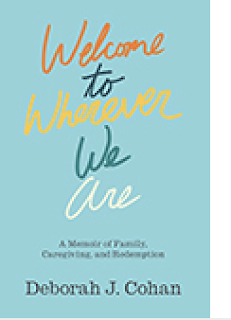
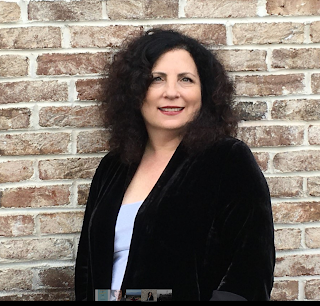
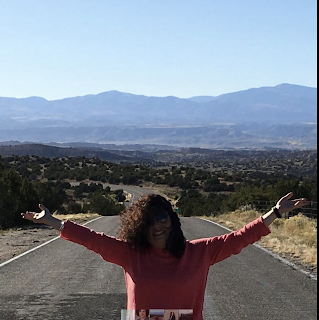
What my book meant to me as I was writing it:
Writing is a way to think clearly, to come to know what we know and what we feel. Writing the book helped me heal from the grief of abuse and the grief of caregiving. It's about breaking silences and coming to voice. It was a also a way to meditate on what home means and what we hold onto and what we let go of, how we remember others and how we're remembered. #memoirshealwritersandreaders
What my book means to me now:
The title feels like a slogan for our times! I had no idea when I gave the book this title how prophetic it would be! The book is about how we hold contradictory realities and what we do with that---in the case of the book, it's about love and abuse. In this current dark moment of our lives with this global pandemic, we are all trying to find some light that will vanquish the darkness. Creativity in the form of writing, as a way of making art, is one way to do this.
I want to shout out two authors in particular right now! One is Sue William Silverman whose new book How to Survive Death and Other Inconveniences just came out, and the other is Rebecca Winn, author of One Hundred Daffodils: Finding Beauty, Grace, and Meaning When Things Fall Apart.
And, the Indie stores I want to recognize are Hub City Bookshop in Spartanburg, SC, A Room of One's Own in Madison, WI, The Book Cellar in Chicago and Brookline Booksmith in Boston, MA!!
So you have it, here's my contact info:
Facebook: Deborah J Cohan and also Deborah J Cohan Writing Twitter: @CohanDebcohan
Published on April 03, 2020 08:26
Elizabeth Kadetsky talks about THE MEMORY EATERS, ghosts, writing, more
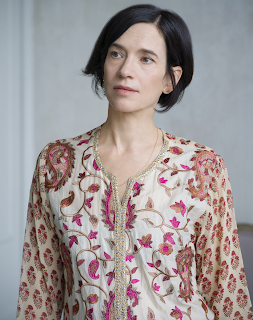
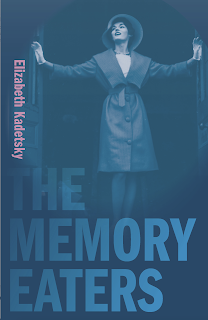
I'm thrilled to host Elizabeth Kadestsky. She is author of the memoir First There Is a Mountain, the short story collection The Poison that Purifies You, and the novella On the Island at the Center of the Center of the World. A professor of creative writing at Penn State and nonfiction editor at the New England Review, she is the recipient of fellowships from the Fulbright Program, MacDowell Colony, and Vermont Studio Center.
Thank you so much, Elizabeth!
One of the most moving sentences I’ve ever read is this: Ghosts live with us. I think they do, too. And I think it isn’t, as Hollywood would have you believe, the ghost who needs to move on to the light—it’s us. Can you talk about that, please?
That is very kind, thank you. I love your way of putting that—I hope to move on to the light some day. My book definitely proposes that our ancestors hover about the periphery like ghosts. They shape our actions, and we make unconscious decisions every day based on stories that have been passed down for decades: stories that we have never interrogated or consciously allowed into our worldviews. Stepping on to the light, for me, is recognizing the presence of my ancestors in my subconscious—good and bad—and then making conscious choices about the extent to which I allow their storylines to shape my reality. This can be true for many people. Shame, in particular, seems to get passed down unconsciously. I know that my mother was unfairly shamed as a child, and that her irrational shame infected me. Another very simple example of an unconscious ancestral narrative is that my Franco-American relatives can be fatalistic about the prevalence of alcoholism and addiction “in our genes.” Having read about genetic markers and the genetic markers for addiction specifically, I don’t believe that this is an inevitability at all. I refuse to give in to the idea that something so personal is fated and out of my control.
Ghosts also live with us in dreams, and perhaps it is through these dreams that one can take further steps toward conscious living. Dreams access that space where the dead and the living co-habit. My mother fully occupies my dream life. When she had Alzheimer’s and was still alive, I continually dreamed that a miracle cure had been discovered and she recovered. After she died I continually dreamed that she was still alive. The dream self, I guess, doesn’t adjust easily to bad news. Even eight years after her death, my mother still appears in my dreams, but there is a greater sense that she has moved “on to the light,” that she is no longer living. But perhaps this slow coming to terms is also a version of my own moving into the light. My ghostly dream mother is, perhaps, my spirit guide shepherding me toward greater reconciliation. Sadly, though, the same rationalism that denies me the salve of believing in an afterlife or reincarnation also insists that I sit with the reality that I am mortal and that life is evanescent. Perhaps the light that we, or I, must enter is the light that allows me to shed my fear of death after seeing my mother move through the ghostly affect of Alzheimer’s to actual death.
How did you decide to write your memoir as a memoir-in-essays? (I love this structure by the way?)
Thank you, again! I saw no way to tell my story in a linear manner. Whenever I wrote about what was happening in the present—my mother’s decline into Alzheimer’s and the many dramatic upheavals along the way—the past would insert itself. Probably, my mind did this as a means of coping. The past appeared in no particular order. The same would happen when I was writing about the past—reflections on the present moment ordered themselves more by topic than by timeline. The essay structure seemed the best way to allow an overlay of time, memory, and mental states. My story, after all, was about occupying liminal spaces. That slide between past and present that I was experiencing while writing the book reflected my mother’s Alzheimer’s-ish reality, almost a sleep walking. It also reflected my own nostalgic mind state, which cast an unreal patina onto events from the past, recalled simultaneously in starkly opposite, positive and negative, ways. I was also writing about drugs, my own experiences in the past and my sister’s tendency to bend the facts or refuse to stick to a hard and true sense of accountability when drugs were involved. My reaction to the latter was to perform the metaphorical throwing up of hands—I didn’t want to waste my time pursuing the truth when someone was artfully constructing false narratives. The book, in a sense, also refuses to impose a rigid sense of rationality. Locating a hard and fast truth when the markers are so elusive is too difficult, and it doesn’t always lead to greater insights or resolutions.
There is so much in this memoir about not just the need to forgive or forget or move on, at least, but to also remember. Part of your book deals with your mother’s Alzheimer’s and about reconstructing a past. I think a lot about how the brain doesn’t really differentiate between what really happened and what someone is hypnotized into believing happened, so that makes it seem as if our memories are indeed fluid. Would you agree? And how do think that helps us (or hinders us) in living our lives?
Memory is our own endless stream of fake news, isn’t it? I read somewhere that dysfunctional families create false mythologies in the same manner that cults do. The cult member accepts a tinged version of reality set forth by a charismatic leader. The isolation and interiority of the group ensures a lack of input from outside, such that the accepted truth is never challenged or subjected to outside corroboration. When a member does allow the entry of an external world view, that person is banished. In this way, group think perseveres.
My grandmother’s alcoholism created dysfunction in my family that rippled out through generations; with it came many false narratives. One was a false accusation against my mother that shaped my mother’s life thereafter, and subsequently shaped my own. Unspoken family secrets are the closest equivalent of group think. Since they are unspoken, they can never be challenged, and at a certain point many of the players forget what, exactly, they even were. All that is left behind is a residue of bad feeling, like that Victorian idea of the ghostly froth that seeped from the mouths of the living dead, the ectoplasm.
This residual memory of an unnamed transgression certainly happened with my mother. By the time she had Alzheimer’s, she had no recollection of the false accusation against her. I believe that through years of shame and denial she’d expunged it from conscious thought even by the time I was an adult, when I first began to sense that it existed. So, for me, unearthing the secret, and speaking it, was an important part of my refusal to forget. Once the accusation was spoken, anyone could see that it was ludicrous. By that point, my mother was in a state where memory and imagination were nearly the same thing, and in my family, I think, there was always that tendency to conflate the imagination with the real anyway. My mother told me the New York Times was “full of lies” when I brought it come as part of a high school English assignment. Choosing journalism as my first career was my next act of rebellion against this family mindset.
Nevertheless, I think that if someone can reconceive a painful history in such a way as to make it meaningful and to point a way forward and away from darkness, be it though nostalgia or recasting the story of one’s own life, by all means they—we—should.
Tell us about your writing process, rituals, planning or not planning, number of cups of coffee you have to have, and more.
I don’t sit down at the desk until at least a full paragraph has taken form in my mind: I’m a firm believer in that “eureka moment”—that one’s best ideas will come when one is in a relaxed and slightly distracted mind state. Nothing is worse for the imagination than staring down that blank page. If I’m lucky, the paragraph takes form when I’m in a position to record it into an audio note or jot it down, because that way, I can inscribe it in my memory. When I’m ready to create the actual written record, I often don’t go back to the original note—having recorded it is enough. Then, once I have a piece of writing started—be it something new or a chapter or scene from something in progress—I carry it around with me in multiple forms, and I more or less compulsively read and re read it, making edits in my head that, once again, I don’t always write down right away. I’ll often have a version on my phone as well as a printed version in my purse. I then become extremely annoying to all the people around me because I can’t think about anything else, and I will constantly pull out any one of the extant versions of the work in progress to keep adding to it and refining it. Once I have something started, I am working on it pretty much 24 hours a day, including in dreams, until it’s done.
What’s obsessing you now and why?
I’m currently on a Fulbright grant to India pursuing a research topic that deals with memory in another form—about the uses and importance of objects from antiquity, and their ethical and unethical applications, for instance by museums. Being in India, my mind is often in the Metropolitan Museum of Art in Manhattan, a place where I spent a lot of time as a child and a nexus for the many wonderful books that I’ve been reading dealing with the art and antiquities trades. I’m not sure exactly what writing will come out of this journey, but I am very interested to spend some time at the Met when I return to see what comes to mind.
What question didn’t I ask that I should have?
Something about posterity and publishing, perhaps? Now that I am finally publishing this book, I am thinking a lot about what it means to put it out in the world, especially since it exonerates my mother for something that I wish she could have forgiven herself for during her life. Publishing a book causes one to spend a lot of time hoping for it to get attention and comparing it to how much attention other books have received. So, I am trying to keep hold of the fact that the simple act of publishing this book accomplishes so much of what I initially hoped for, ending, as it were, a cycle of secrets and lies. <!-- /* Font Definitions */ @font-face {font-family:"Cambria Math"; panose-1:2 4 5 3 5 4 6 3 2 4; mso-font-charset:0; mso-generic-font-family:roman; mso-font-pitch:variable; mso-font-signature:-536870145 1107305727 0 0 415 0;} @font-face {font-family:Calibri; panose-1:2 15 5 2 2 2 4 3 2 4; mso-font-charset:0; mso-generic-font-family:swiss; mso-font-pitch:variable; mso-font-signature:-520092929 1073786111 9 0 415 0;} /* Style Definitions */ p.MsoNormal, li.MsoNormal, div.MsoNormal {mso-style-unhide:no; mso-style-qformat:yes; mso-style-parent:""; margin:0in; margin-bottom:.0001pt; mso-pagination:widow-orphan; font-size:12.0pt; font-family:"Times New Roman",serif; mso-fareast-font-family:Calibri; mso-fareast-theme-font:minor-latin;} .MsoChpDefault {mso-style-type:export-only; mso-default-props:yes; mso-fareast-font-family:Calibri; mso-fareast-theme-font:minor-latin;}size:8.5in 11.0in; margin:1.0in 1.0in 1.0in 1.0in; mso-header-margin:.5in; mso-footer-margin:.5in; mso-paper-source:0;} div.WordSection1 {page:WordSection1;}</style><br /><div class="MsoNormal"><br /></div><style><!-- /* Font Definitions */ @font-face {font-family:"Cambria Math"; panose-1:2 4 5 3 5 4 6 3 2 4; mso-font-charset:0; mso-generic-font-family:roman; mso-font-pitch:variable; mso-font-signature:-536870145 1107305727 0 0 415 0;} @font-face {font-family:Calibri; panose-1:2 15 5 2 2 2 4 3 2 4; mso-font-charset:0; mso-generic-font-family:swiss; mso-font-pitch:variable; mso-font-signature:-520092929 1073786111 9 0 415 0;} /* Style Definitions */ p.MsoNormal, li.MsoNormal, div.MsoNormal {mso-style-unhide:no; mso-style-qformat:yes; mso-style-parent:""; margin:0in; margin-bottom:.0001pt; mso-pagination:widow-orphan; font-size:12.0pt; font-family:"Times New Roman",serif; mso-fareast-font-family:"Times New Roman";} a:link, span.MsoHyperlink {mso-style-noshow:yes; mso-style-priority:99; mso-style-parent:""; color:blue; text-decoration:underline; text-underline:single;} a:visited, span.MsoHyperlinkFollowed {mso-style-noshow:yes; mso-style-priority:99; color:#954F72; mso-themecolor:followedhyperlink; text-decoration:underline; text-underline:single;} .MsoChpDefault {mso-style-type:export-only; mso-default-props:yes; font-size:10.0pt; mso-ansi-font-size:10.0pt; mso-bidi-font-size:10.0pt; mso-fareast-font-family:Calibri;}size:8.5in 11.0in; margin:1.0in 1.0in 1.0in 1.25in; mso-header-margin:.5in; mso-footer-margin:.5in; mso-paper-source:0;} div.WordSection1 {page:WordSection1;}</style><br /><br />
Published on April 03, 2020 08:23
March 31, 2020
Joanna Hershon talks about her extraordinary new novel St. Ivo, writing, loss and so much more
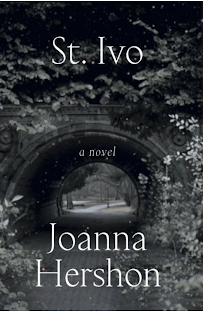
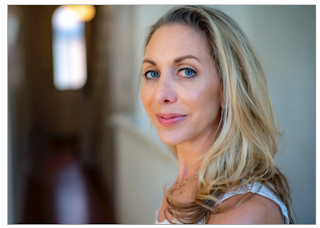
Joanna Hershon is the author of five novels: the extraordinary St. Ivo (Forthcoming from Farrar, Straus & Giroux), Swimming, The Outside of August, The German Bride and A Dual Inheritance (Ballantine Books). Her writing has appeared in (among other places) Granta, The New York Times, One Story, The Virginia Quarterly Review, the literary anthologies Brooklyn Was Mine and Freud’s Blind Spot, and was shortlisted for the 2007 O. Henry Prize Stories. She’s an adjunct assistant professor in the Creative Writing department at Columbia University and lives in Brooklyn with her husband, painter Derek Buckner, their twin sons and daughter.
I also always think that writers are haunted into writing their books, looking for some answer. What was haunting you when you wrote St. Ivo?
The process of how this book came into being seems directly born from a haunting or at least the notion that writing fiction is inevitably about following one’s anxieties, even if (or especially because) the anxieties are unconscious. I had the basic opening for this book for years, during which time I thought I was going to write some kind of literary thriller involving a whole subculture about which I ended up writing exactly nothing. I did a fair amount of research and plotting and then I was…stuck. I couldn’t sort it out, couldn’t find the story. In the meantime, my domestic life was extremely full with raising twin boys and moving and renovating, and when our boys were 8 years old, I became pregnant again. I decided to put the writing project aside. I was too frustrated by my inability to find the story. Our daughter was born and I was happily focused on her, and when she was about six months old and I hadn’t written in months, I rejoined the wonderful Brooklyn Writers Space and forced myself to return to that same opening for the thriller, only now I would forget about plot, craft, structure—basically anything
I usually consider when beginning a project. I would write the way I used to in journals when I was a teenager. Those writing sessions were almost feverish. An image would pop up and I’d write into it and I’d let myself veer off into interrupting images that reminded me of Tarot cards. This probably sounds like it would have produced pages and pages of indulgent digressions, but, actually, very quickly, my imagistic threads began braiding themselves into a cohesive structure. And what I found was that I wasn’t writing a thriller but I was full of dread and also strange anticipation. I was writing a story of a mother who had lost her daughter to forces beyond her control. There I was, hoping to write past my own judgements about plot and structure and what I found was that I was haunted by the what-ifs of being a parent. I hadn’t consciously worried about any of the specific issues that I eventually came to write about, but fear is primal. And so, of course, is love.
So much about St. Ivo is about the choices we make, the families we create—or tear apart. And it’s a literary novel that also blends in suspense, which I loved. But the question that got me was about how we are able to move on from loss, and that perhaps the answer is we don’t. instead, we have to learn to live alongside it. Can you talk about this please?
You put that so eloquently! Learning to live alongside loss—it’s remarkable. The idea that one can go on with living after horrible things happen—the notion that the pleasures of life are still possible—this notion seems perverse in the face of grief, and it’s also weirdly thrilling, almost illicit. There’s this addictive and perhaps especially American story of linear experience in which we suffer and come through it; we not only learn but grow. This process can certainly be both true and inspiring, but it seems that the more realistic narrative is a layered one, a multi-faceted reality in which one can be simultaneously miserable and also taste something delicious, sad and anxious and also able to run and sweat and feel the strength of physical exertion. We can be depressed, able to charm strangers and enjoy the force of our own charm. The simultaneous experience of outer and inner life, how many inner lives can exist at once—this is where fiction can approach what it feels like to be alive.
I want to talk about the beauty of your language, which had me underlining passages. How does that come about as you are writing?
Oh Caroline—thank you. I mean… I have no idea. I will say that I consciously try to write while remaining connected to my body. Michael Cunningham was an important teacher for me when I was writing my first novel, Swimming. His ability to convey the importance of staying connected to our physical selves (in addition to his indelible contributions to literature) made a particular impact on the way I approach writing.
I loved that the story was unfolding in three days, especially hot ones—for some reason that gave it such an atmospheric charge! Can you talk a bit about your story world, and why you set it where you did, and how it furthered the story for you?
This novel began as two separate pieces. My original feverish beginning that I mentioned earlier turned into a short story called (confusingly!) Saint Ivo, which was eventually published in Granta. That story has a pretty similar beginning and ending as my St. Ivo novel but there’s nothing set during those three days, no weekend away. Before Granta accepted it, I couldn’t let the story go, and I kept thinking about it. Simultaneously, I was talking out a novel idea with my husband about a weekend set in an area where we’d once spent part of a summer. At some point I merged the two stories. The sense of place, the strange beauty of the location and the vague feeling of potential menace—it all took on a life of its own. And I do tend to love the construct of a weekend visit, how temporary domestic rhythms establish themselves so quickly over a limited period of time.
What’s obsessing you now and why?
To be honest, I’m a little obsessed with the idea of St. Ivo being released into the world. Though this is my fifth novel, I still find it amazing that my own invented, intimate story will (hopefully) be read by friends and strangers. That readers will have their own personal experiences with my story seems remarkable. No matter how slim a novel is--and this happens to be my slimmest by far—it’s a commitment to read a novel, and I’m honored when anyone commits to mine.
What question didn’t I ask that I should have?
Your questions were just perfect. Thank you so much for your curiosity and for being such a true champion of writers.<!-- /* Font Definitions */ @font-face {font-family:"Cambria Math"; panose-1:2 4 5 3 5 4 6 3 2 4; mso-font-charset:0; mso-generic-font-family:roman; mso-font-pitch:variable; mso-font-signature:-536870145 1107305727 0 0 415 0;} @font-face {font-family:Calibri; panose-1:2 15 5 2 2 2 4 3 2 4; mso-font-charset:0; mso-generic-font-family:swiss; mso-font-pitch:variable; mso-font-signature:-536859905 -1073732485 9 0 511 0;} /* Style Definitions */ p.MsoNormal, li.MsoNormal, div.MsoNormal {mso-style-unhide:no; mso-style-qformat:yes; mso-style-parent:""; margin:0in; margin-bottom:.0001pt; mso-pagination:widow-orphan; font-size:12.0pt; font-family:"Times New Roman",serif; mso-fareast-font-family:Calibri;} .MsoChpDefault {mso-style-type:export-only; mso-default-props:yes; font-size:10.0pt; mso-ansi-font-size:10.0pt; mso-bidi-font-size:10.0pt; mso-fareast-font-family:Calibri;}size:8.5in 11.0in; margin:1.0in 1.0in 1.0in 1.25in; mso-header-margin:.5in; mso-footer-margin:.5in; mso-paper-source:0;} div.WordSection1 {page:WordSection1;}</style>
Published on March 31, 2020 11:23
Leslie Swartz talks about THE HECATOMB (she writes as J. Edward Neill), gives shout-outs to other books and indies, and more!
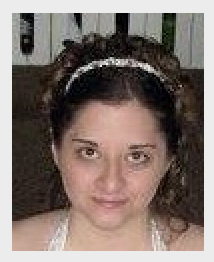
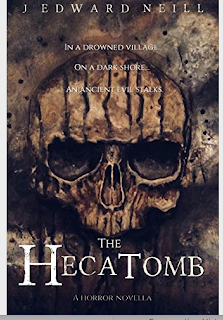
My newest release is Elohim, book three in The Seventh Day Series. It introduces a few new characters that will be super important in future books and wraps up the Lilith storyline readers may have thought was over at the end of book one. Don’t worry, the last four books have all been plotted out. Unless something catastrophic happens in the next two years, they will all be written and all story lines will have satisfying endings. The series is above all else a story of a family. A family of human-born angels fighting to save the world from demons and monsters with the help of a vampire queen and witches, but still, a family. Sibling relationships, romantic relationships, and mental illness are all explored. It’s character-driven, dark, and funny.
The series was created when characters I’d had in my head since I was sixteen finally made sense. It seemed like I could never come up with a plot good enough for my MC. Twenty-one years of angelic, biblical, and mythological research and still, the story wouldn’t come to me. Then, one day I was bingeing a Netflix show and the actor that I’d decided was the only person good enough to play the non-existent part of my MC should it ever become a television series did something that felt too real. In that moment, I didn’t feel like I was watching the character he was playing. It felt like I’d witnessed him having a personal moment. It broke me. I cried for forty-five minutes like a baby and I decided that I HAD to get something written or he’d start winning Oscars and never agree to star in something based on a book a nobody like me had written. So, that day, I plotted out the first three books, wrote a few scenes and it snowballed from there. I had the inspiration, I just needed a little push to focus.
My favorite new book (new to me, anyway) is The Hecatomb by J. Edward Neill. It’s a collection of related short horror stories that I read in one four-hour session. I couldn’t put it down. The timeline feels cyclical; the reader doesn’t know which story came first. I’m still thinking about it months later. It’s so good. Super creepy and completely engrossing.
My favorite indie book store is Books On Sale on the South Side of Indianapolis. It’s tucked away in the Southern Plaza strip mall and looks very modest from the outside, but once you go in, it’s huge. They have a great selection of used books, things you can’t find anywhere else. Plus, the sales are amazing. They don’t have an online store as of yet, but if you’re in the Indianapolis area, I highly suggest you check them out.
Published on March 31, 2020 09:49
Janelle Brown talks about Pretty Things and DOES A PSA for The Nothing is Cancelled Book Tour
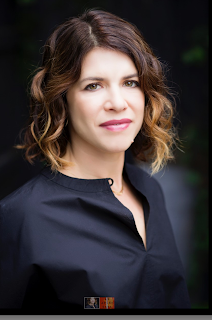
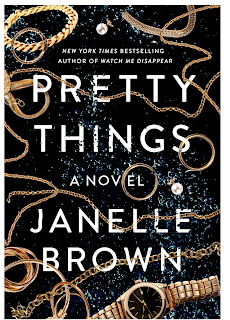
Want to hear and see NYT Bestselling author Janelle Brown talk about her amazing new novel PRETTY THINGS and shout-out other new books? Of course you do! Here is the link!
https://wdrv.it/5a0af3b7a
Published on March 31, 2020 09:46

